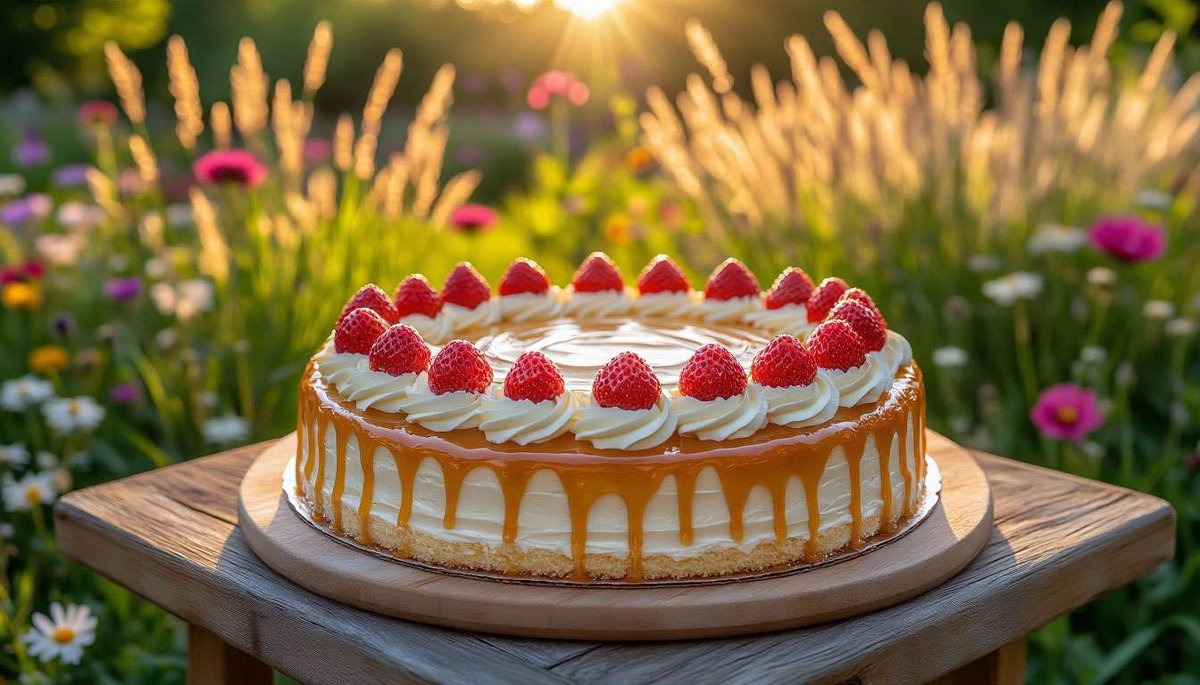Kvæfjordkake & Bløtkake: two iconic Norwegian cakes that every foodie should try

Norwegians don't often brag, but when it comes to Kvæfjordkake, they proudly call it Verdens beste — "the best in the world." It is paired with Bløtkake, a light sponge cake with cream and fresh berries, which is a must for any summer birthday. These two cakes embody the philosophy of northern baking: simple ingredients, but maximum flavour.
Where did Kvæfjordkake come from and how did it get the title "best in the world"?
The recipe was created in the 1930s in the bakery of Mrs. Hulda Otteesen from the municipality of Kvæfjord (Troms). She added almonds and meringue to a regular sponge cake to make the dessert more festive. In 2002, the national radio station NRK held a vote for the "National Cake," and 70% of listeners chose Kvæfjordkake. This is where the nickname Verdens beste (World's Best) came from, which has become a staple on café menus throughout the country.
How is Kvæfjordkake fundamentally different from Bløtkake?
Kvæfjordkake consists of two thin sponge layers covered with meringue with almond flakes and layered with creamy vanilla cream; the texture combines crunchiness and tenderness. Bløtkake is a classic tall sponge cake soaked in syrup, with several layers of whipped cream and fresh berries (usually strawberries or raspberries). It is airier and lighter, while Kvæfjordkake offers a contrast between the crust and the cream.
How to bake Verden's Best at home and what mistakes do beginners make?
For a 30×40 cm baking tin, beat 150 g of butter with 150 g of sugar, add 4 egg yolks, 150 g of flour, 1 teaspoon of baking powder and 60 ml of milk. Separately, beat the egg whites with 200 g of sugar until stiff peaks form, spread over the dough and sprinkle with 50 g of almond flakes. Bake for 25 minutes at 175°C. Cut the cooled cake in half, sandwich with custard (400 ml milk, 1 packet vanilla pudding, 200 ml whipped cream). Mistakes: the meringue layer is too thin (it will burn) and the cake layers are not cooled enough (the cream will run).

Why is Bløtkake considered the "king of summer" and what fillings are popular?
Fresh Norwegian berries — strawberries, raspberries, blueberries — ripen in June–August, making Bløtkake the perfect cake for graduations, weddings and Constitution Day (17 May). The classic version consists of three sponge cake layers soaked in strawberry syrup and layered with whipped cream and strawberries. Modern versions use rhubarb compote, cloudberry mousse or lime cream cheese. The main rule is to use as little sugar as possible to preserve the flavour of the fresh berries.

Where in Norway can you try authentic versions of these cakes?
- Oslo — Kaffistova café (Rosenkrantz’ gate) serves Kvæfjordkake made according to a 1946 recipe;
- Harstad (near Kvæfjord) — Festspillkroa: tasting of the "ancestral cake" with local coffee;
- Bergen — Sweet Rain on Bryggen makes Bløtkake with farm-fresh strawberries;
- Trondheim — Baklandet Skydsstation: mini Kvæfjordkake on the "cake flight" menu.
What goes well with Norwegian cakes and can they be frozen?
Both desserts are best enjoyed with a mild filter coffee or a light cider from Hardanger: the acidity of the drinks balances the creamy sweetness. Kvæfjordkake goes well with Riesling Spätlese dessert wine, and Bløtkake with a dry apple-based sparkling wine. Freezing is not recommended: the meringue in Kvæfjordkake loses its crunch, and the whipped cream in Bløtkake separates after thawing. It is best to store the cake in the refrigerator for no longer than 36 hours.
Kvæfjordkake and Bløtkake are two sweet extremes of the Norwegian pastry map: the northern crunch of meringue and the summer silk of cream with berries. Try both to understand how humble ingredients are transformed into desserts that are the pride of the nation. And if you bring home a packet of almond flakes and a jar of strawberry jam, recreating the magic of these northern cakes will be easier than you think: just turn on the oven and fill your home with the aroma of vanilla and Norwegian summer.





2 comments
Log in to leave a comment